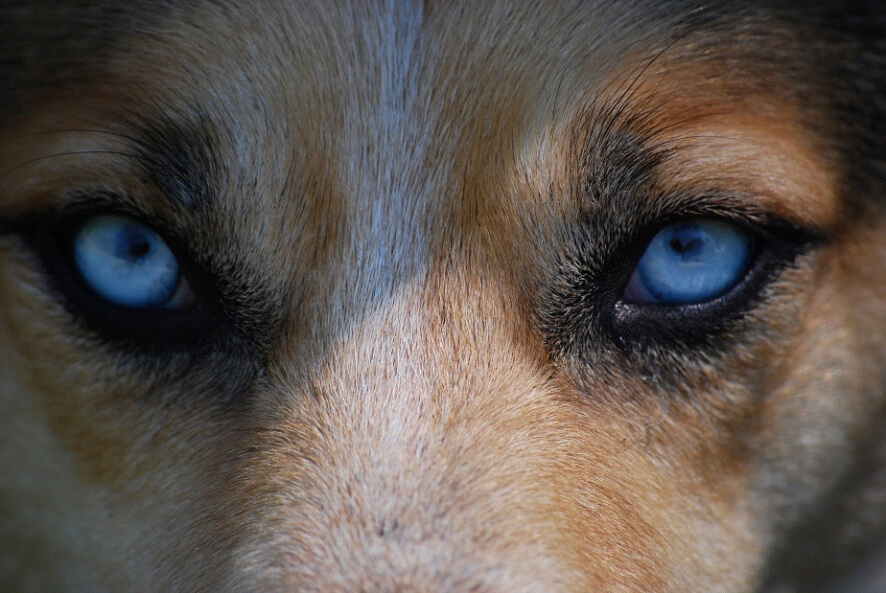Common Causes of Dog Eye Discharge

Sleepy dust. Eye gunk. It happens from time to time. But why, and when is it dangerous? The medically correct term for eye gunk in dogs is ‘dog eye discharge.’ It ranges from a steady trickle of a clear, watery consistency to a thicker pus-like discharge with a tendency to crust, which could be a sign of a bigger problem. We take a look at the common causes of dog eye discharge.
What is Normal?
Like our eyes, dog’s eyes need lubrication in the form of tears to flush out debris and to function normally. Tears contain water, fats and mucus. Tear production increases when foreign debris enters the eye, and production settles back down again once the object is cleared. Clear eye discharge may also be the result of allergies or irritation from wind blowing directly into a dog’s eyes.
Reddish-brown tear stains are the result of the presence of porphyrin, a molecule that occurs upon the break down of iron. These tear stains are harmless, and are more apparent in white and light coloured dogs. Porphyrin is also excreted through urine, saliva and the gastrointestinal tract, so you will notice some staining in those areas as well. There are products available that claim to remove tear stains, with mixed reviews. Keep the hair surrounding the eyes short, and gently wipe away any tears with a clean, damp cloth every day.
A yellow-green or pus-like eye discharge could indicate an infection. Here are some of the most common causes of dog eye discharge.
1. Conjunctivitis
Or, as we humans call it, pink eye. Conjunctivitis is an inflammation of the outer layer of the eye and inner layer of the eyelid. It is often paired with thick dog eye gunk that appears as a yellow-green puss-like discharge that crusts overnight. Dogs with conjunctivitis will also have bloodshot whites, and may blink excessively or try to scratch their eye.
2. Epiphora
For dogs, and humans, constantly watery eyes is called epiphora. This happens because the tear duct isn’t able to properly dispose of excess tearing, which is especially common in flat-faced dog breeds. Visit your veterinarian to figure out what’s causing the discharge, then treat accordingly. In some cases, severe epiphora requires tear duct surgery.
3. Dry Eye
A sticky, tenacious eye discharge could point to canine dry eye. This occurs when there is a failure to produce adequate eye-cleansing tears. Dry eye symptoms may include mucus and inflammation. It may be the result of distemper, injury, a knock on the head or injury near a tear-producing gland, or an autoimmune condition where the body attacks tear gland tissue. Infection is a serious risk for dogs with dry eye and it can lead to painful, inflamed eyes.
When Should I Worry?
So how do you know if your dog is having eye problems?
Keep an eye out for tell-tale signs of eye issues:
- Excessively watery eyes
- Excessively dry eyes
- A noticeable increase in eye discharge
- Change in eye discharge consistency or colour
- Rubbing or pawing at the eyes
- Excessive blinking
- Bloody or excessively bloodshot eyes
- A visible foreign object in the eye
Dog eye discharge is common, but it’s important to know exactly what is causing your furry friend’s eye discharge. Once you determine the reason for the eye discharge, you can take proactive steps to treat it so your dog can see clearly and be comfortable and happy once again.
Always consult with your veterinarian whenever you’re concerned about the health of your dog. They will diagnose any issues and relieve or treat the underlying cause and resultant symptoms, helping you take steps to ensure your pup has a better, healthier life.
For more on dog health, read 4 Tips for Doggie Dental Care.
